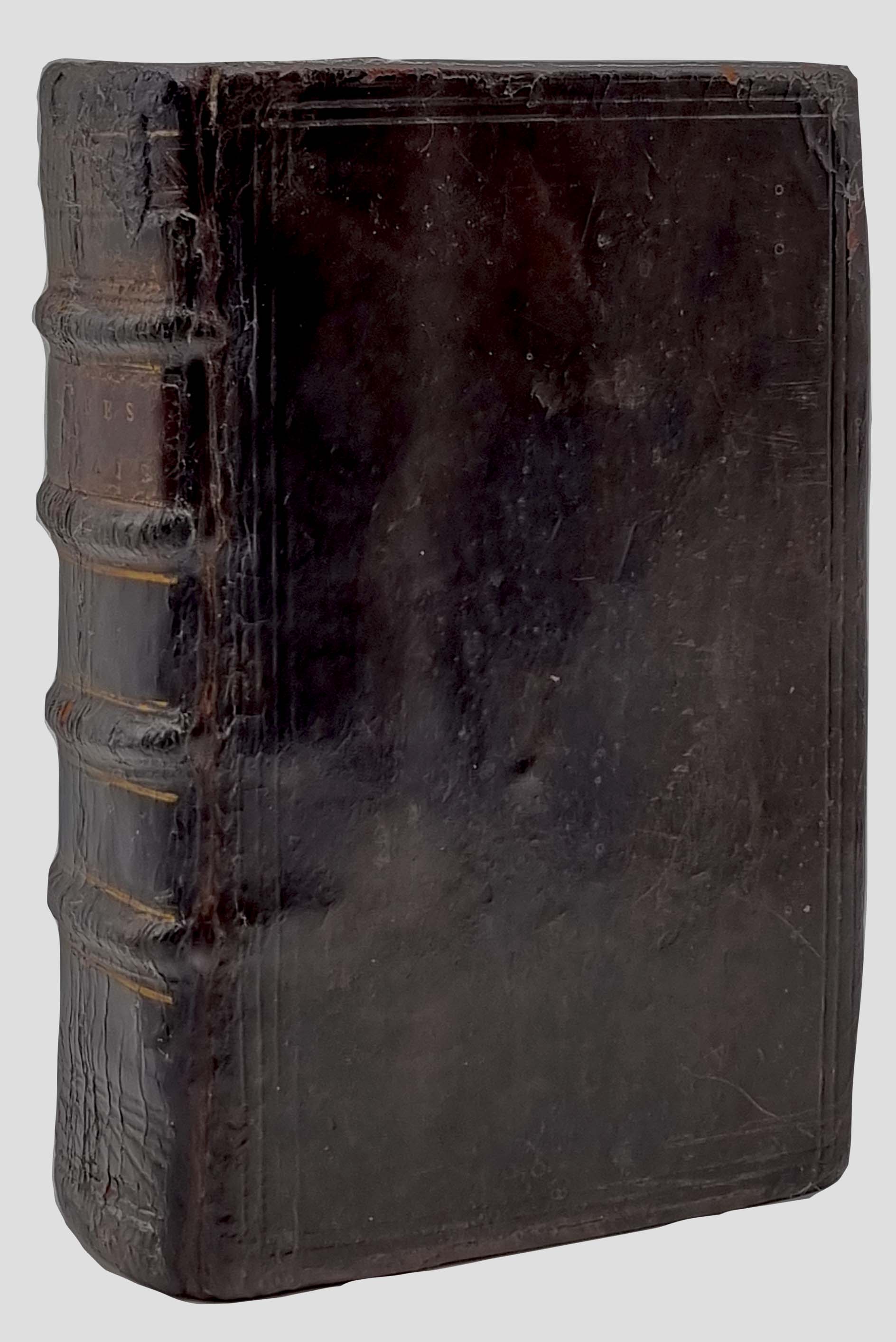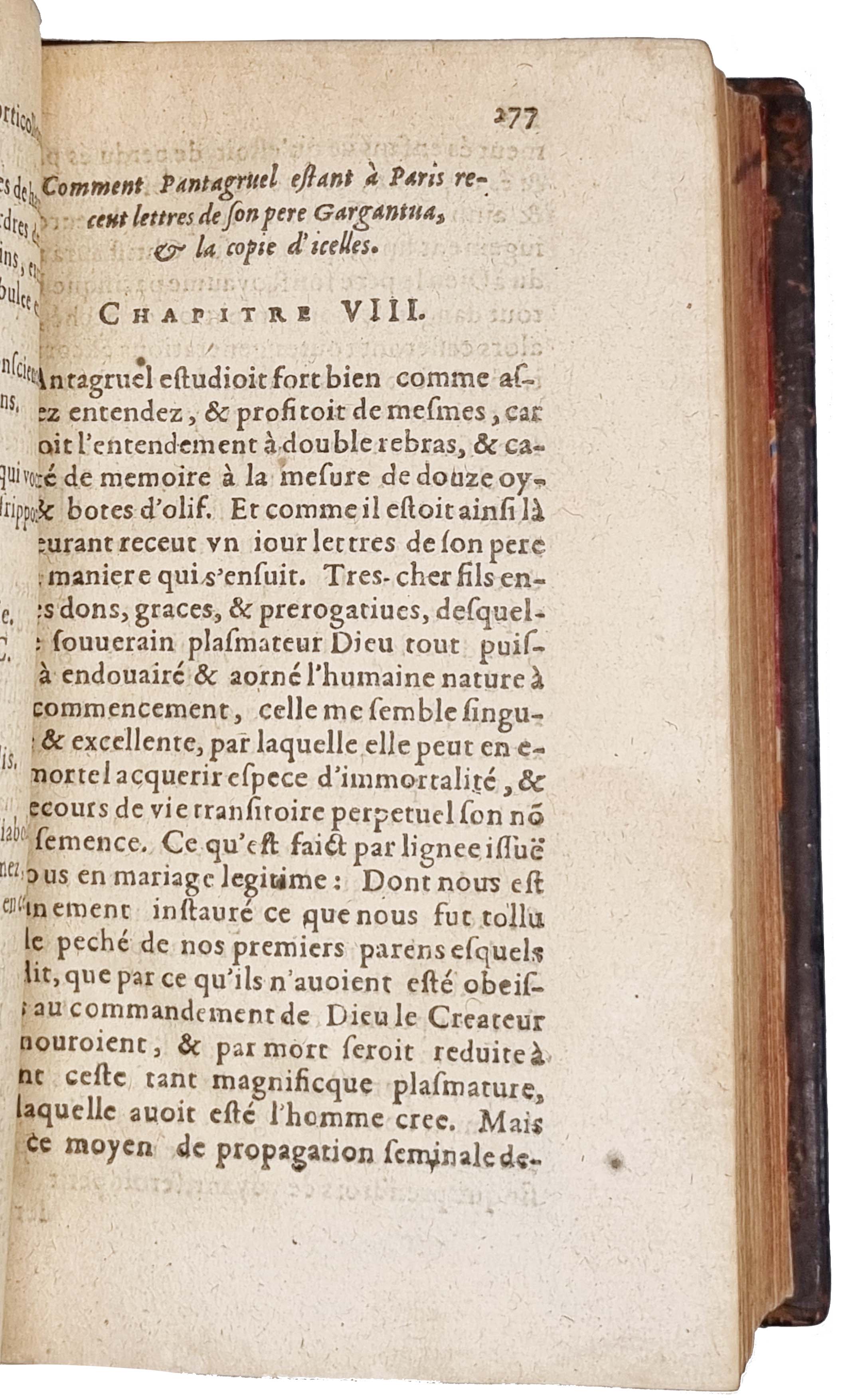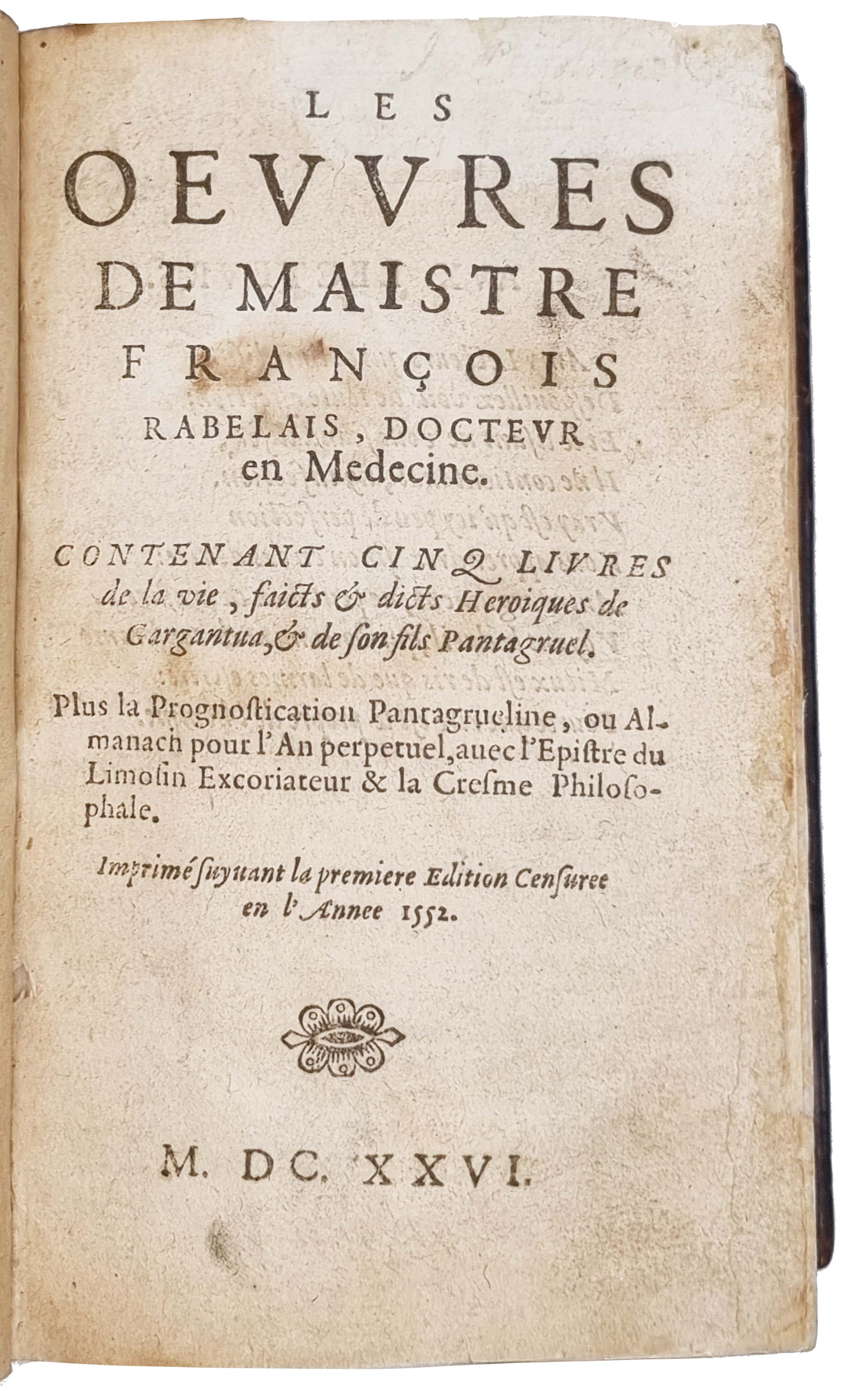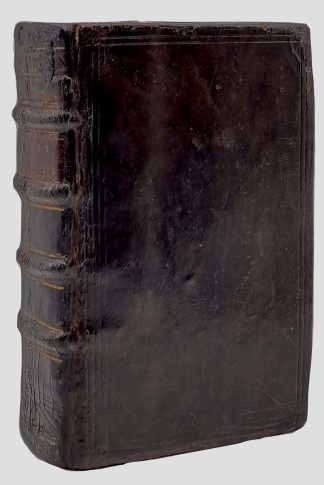RABELAIS, François.
Les Oeuvres…Contenant Cinq Livres.
[S.e. (France)], [s.n.], 1626£2,750.00
8vo. Pp. 1106 (xxii). Roman letter. Small woodcut device to tp, historiated and ornamental headpieces and initials, woodcut portrait of Rabelais to p. 360. Early ms A:S: to p. 358. Age yellowing, occasional foxing, light water stains to a few leaves, marginal tear to ff. G1, Rr1, ancient repair at head of K1, tp of book III badly flawed in printing, but without text loss, Aa4 outer edge trimmed. A good copy in contemp. calf, rebacked, spine remounted and repaired at upper corner, marbled pastedowns, faded aer.
François Rabelais (1483-1553) is known for his off-piste, satirical and bawdy humour as well as his controversial anticlerical opinions. He is playful and contradictory by nature, and produced a rich and wide ranging body of writing including but not limited to comedic novels, mocking poetry and parodic songs. Underlining these is a deeply critical view of the tumultuous political environment stirred up by the Reformation, as well as a message which asks for peace and a return to the glory of antiquity. This volume is demonstrative of his remarkable range and contains hugely popular works like Gargantua and Pantagruel and Thélème. He is the origin of the adjective ‘Rabelasian’, something “marked by gross robust humor, extravagance of caricature, or bold naturalism.” Unusually large format edition containing an attractive woodcut portrait of Rabelais consistent with the digitized version at the Lyon municipal library.
The stories exploit popular legends, farces and romances as well as classical and Italian material and are intended for a learned, aristocratic audience. Scatological humour is employed as well as religious satire. Rabelais’s own views can be called ‘Christian humanism’, though orthodox religious figures often condemned his works. His first novel was published in 1532 under the pseudonym Alcofribas Nasier, and was a mock-heroic chivalrous romance entitled Pantagruel. Rabelais also produced parodies of the yearly almanacs, mocking the alleged astrological predictions for the coming year. Gargantua is another satire of a medieval romance, featuring the son of Pantagurel, a giant named Gargantua, and features a number of concealed references to Charles V, scholastic pedagogy and a critique of heraldry. He was a controversial figure until his death, and was able to publish such works due to protection from figures like Charles of Lorraine and Cardinal de Guise.
“With an immense erudition, representing almost the whole knowledge of his time, with an untiring faculty of invention, with the judgement of a philosopher and the common sense of a man of the world, with an observation which let no characteristic of the time pass unobserved and with a ten-fold portion of the special Gallic gift of good-humoured satire, Rabelais united a height of speculation and depth of insight and vein of poetical imagination rarely found in any writer… his work is the mirror of the C16th. in France, reflecting at once its comeliness and its uncomeliness, its high aspirations, its voluptuous tastes, its political and religious dimensions, its keen criticism, its eager appetite and hasty digestions of learning, its gleans of poetry and its ferocity of manners”. – Enc. Brit. 13th. ed.
Brunet IV 1058; Rawles & Schreech 93.2; Plan 127.In stock





